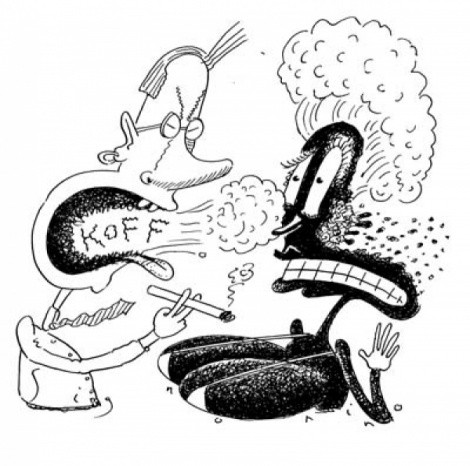
My girlfriend and I were fighting over which led to a greater chance of getting cancer, smoking or tanning. I probably average a cigarette a day, and my girlfriend usually goes tanning two or three times a week. Who gets cancer first? —Dave, Columbus, Ohio
A slo-mo suicide pact—quel romantique! The competitive aspect bugs me, though. Why not jump out the window hand in hand and have this end in a tie? Research on light smokers is fairly sparse (heavy smokers get most of the ink), but what there is won’t be much comfort. One Norwegian study, which tracked more than 40,000 people for up to 30 years, found the risk from smoking just one to four cigarettes per day was surprisingly high. For men the risk of dying from lung cancer was 2.8 times higher than for nonsmokers, for women more than 5 times higher. The cardio news was bad, too: the risk of death from ischemic heart disease was 2.7 to 2.9 times higher than for nonsmokers.
Overall, light smokers’ risk of dying from any cause was about 50 percent greater than nonsmokers’. (This means within a given period of time, you understand. The long-run risk of death for anyone short of the Virgin Mary is a solid 100 percent.) Some light smokers, maybe including you, assume there’s a minimum smoking threshold below which they’re safe. Don’t count on it. A recent metastudy (i.e., an analysis of existing studies) of smoking exposure looked at “pack-years”—the number of packs you smoke per day times the number of years you smoke. It suggests that even at low smoking intensity (fewer than ten cigarettes daily) your odds of developing lung cancer increase linearly as your pack-years go up. At very low levels, prediction gets dicey, but the obvious conclusion from looking at the charts is this: the less you smoke, the lower your added risk of lung cancer; the only way to reach zero added risk is to smoke zero cigarettes.
(Side note to heavy smokers who figure they’ll just cut back rather than kick the habit altogether: Good luck with that. Research finds such folk tend to go in for “compensatory smoking,” meaning they smoke fewer cigarettes but take more and deeper puffs. If you’re going to quit, quit.) Now tanning. Exposure to ultraviolet radiation, whether from the sun or a tanning booth, can prematurely age your skin and increases your risk of skin cancer; federal authorities have declared UV radiation from tanning lamps and beds a known carcinogen. Just so we’re clear, not all UV radiation is the same—the UV reaching the Earth’s surface takes the form of either UVA, which has a longer wavelength and thus penetrates your skin more deeply, or UVB, which penetrates less but can be more destructive.
Can’t decide what’s worse? Not to worry— tanning beds typically emit both. Bonus cause for panic: Tanning salons and their customers routinely take a technology that’s borderline stupid and push it over a cliff. An inspection of 50 tanning facilities in North Carolina (North Carolina! People are going to tanning salons in the fricking sun belt!) found that 95 percent of patrons exceeded the recommended UV exposure limits.
How big a risk are we talking about here? One study found that even after adjusting for natural sun exposure and the tendency to sunburn, use of tanning booths multiplied the risk of squamous cell cancer by 2.5 and basal cell cancer by 1.5. That’s not the worst of it. A 2007 metastudy in the International Journal of Cancer reviewed 19 different investigations of tanning risk and found that people who had ever used tanning beds had a 15 percent greater chance of developing melanoma, the most dangerous form of skin cancer. Seven studies showed a 75 percent greater risk of melanoma if your first tanning session was before age 35. Probably the best examination of cancer risk from tanning salons was a 2003 study of 100,000 Scandinavian women. On average, women who visited a salon at least once a month had a 45 to 55 percent greater risk of developing melanoma than nontanners.
Ordinarily, given the apples-to-oranges comparisons and somewhat squishy numbers (metastudies in particular are the statistical equivalent of sausage making—the numbers look fine coming out but you may not want to know what went in), I might hesitate to make any definite statements about the relative perils of these two vices.
But we’re not talking about mere science here, we’re talking about winning an argument. One can make a plausible case you’re doubling your risk of lung cancer with that daily cigarette, while your girlfriend is giving herself a 50 percent higher chance of getting a cancer that’s highly curable if detected early. True, her skin will soon look like leather, whereas you won’t show any symptoms till the coughing gets bad. But I still say you’ve got her beat.
Comments, questions? Take it up with Cecil on the Straight Dope Message Board, StraightDope.com, or write him at the Chicago Reader, 11 E. Illinois, Chicago 60611.